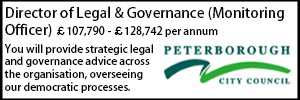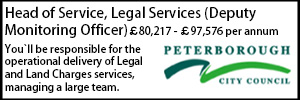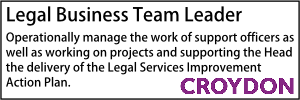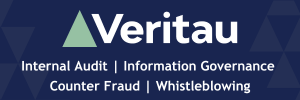
Maximising ROI in renewable energy: Legal, technical, and financial strategies for net-zero success
- Details
The Hugh James Energy and Renewables team share their expertise on achieving net-zero, and emphasise that it doesn’t have to come at the cost of return on investment (ROI).
At Hugh James’ fringe session during the Welsh Local Government Association Annual Conference 2025, one message came through loud and clear: achieving net-zero doesn’t have to come at the cost of return on investment (ROI). With the UK accelerating its decarbonisation agenda and Welsh local authorities at the forefront of climate action, the conversation is shifting - sustainability and financial viability must now go hand in hand.
For more on how Hugh James supports public and private sector organisations on their net-zero journey, visit the Energy & Renewables | Hugh James team page.
A key theme of the session was the growing power of cross-sector collaboration. By aligning legal, technical, and financial expertise from the outset, local authorities and partners are not only delivering on their environmental goals but doing so in ways that strengthen long-term value and manage public money responsibly.
The challenge of ROI in decarbonisation projects
Whether it’s retrofitting public buildings, deploying local heat networks, or developing renewable energy schemes, balancing carbon reduction with sound financial returns remains a real challenge for local government.
Common obstacles include:
- Long project timelines and extended payback periods
- Evolving and complex regulatory frameworks
- Difficulty accessing capital or suitable funding streams
- Technical uncertainty around new technologies and integration
Without coordinated planning and strategic input from the outset, projects risk stalling, or worse, delivering poor value for money.
Legal considerations
At Hugh James’ fringe session, titled ‘Maximising ROI in renewable energy: Legal, technical, and financial strategies for net-zero success’, Ioan Prydderch, Head of Business Division, and Peter Hurn, Head of Property, underlined that a robust legal framework is critical to safeguarding ROI throughout the project lifecycle.
Their key insights included:
- Clear, aligned contracts – Ambiguity can lead to underperformance or disputes. Contracts should detail energy outputs, performance guarantees, and maintenance responsibilities.
- Effective risk allocation – Clearly defining which party bears specific risks (e.g. construction delays, technology failures) enhances bankability and insurability.
- Procurement compliance – The Procurement Act 2023 introduces greater transparency and accountability, particularly for public bodies. Early legal input is essential to navigate these obligations while supporting net-zero objectives.
The session also highlighted the importance of securing planning permissions, negotiating Section 106 agreements, and drafting essential property documentation such as wayleaves, easements, and long-term leases. Establishing these legal foundations is crucial for project viability and investor confidence.
Additional ROI-related legal considerations include grid and grid-sharing arrangements, satisfying funder requirements, and ensuring comprehensive option and lease agreements. From a banking perspective, thorough cost planning, financial modelling (including debt service and amortisation), funding strategies (e.g. loans, grants, SPVs), and managing consents under existing finance documents are all critical.
On the procurement front, adapting to the new legal regime requires clear contract classification and adherence to updated processes and transparency duties. In construction, well-structured contracts should define responsibilities, performance guarantees, consultant roles, and warranty provisions. Finally, commercial success depends on solid Non-Disclosure Agreements (NDAs) and well-drafted Power Purchase Agreements (PPAs) that manage risk and secure long-term revenue.
Technical and financial innovation
One of the most compelling parts of the session came from Dr Ken Gale of AI Energy Solutions, who showcased how AI-driven design and funding support can reshape the future of public sector investment in Wales.
Bringing this to life, Dr Gale shared a practical case study demonstrating how a Welsh Council can unlock grant funding through the Welsh Government’s Low Carbon Heat Capital (LCHC) scheme. By harnessing an AI Agent, Councils can cost effectively set ambitious decarbonisation targets for any building still reliant on high-temperature gas boilers - accessing up to 90% capital grant support, while dramatically reducing the need for costly upfront M&E consultancy.
Ordinarily, retrofitting these types of public sector buildings with low-temperature air source heat pumps would require extensive, and costly, upgrades to the entire heating system, driving projected capital costs up to circa £2.3 million. However, by considering high-temperature heat pump technology instead, capital costs can be slashed by more than 80%, bringing the estimate down to just £438,000.
To make this a reality, Councils can turn to an AI-powered agent developed by Dr Gale, freely available through ChatGPT, which allows users to rapidly generate an interim business case and technical feasibility study for a high-temperature (80°C) propane or CO₂ heat pump solution, using nothing more than the existing boiler data and building postcode.
In a further innovation, a more advanced AI agent will be used to automatically generate a LCHC grant-compliant feasibility study, complete with RIBA Stage 3/4 design examples. This means that a multiple building LCHC grant application can potentially be delivered in-house in just days, dramatically reducing the need for upfront costly M&E consultancy during the initial grant application process.
This Chat GPT tool is being developed to produce a full set of bespoke application-ready documents, fully tailored to any LCHC grant application requirements, transforming what is often an expensive and resource-heavy exercise into an efficient, in-house workflow.
Dr Gale’s example powerfully illustrated how integrating AI into grant and design processes can help local authorities deliver projects faster, cut costs, and boost funding success, while ensuring a strong return on investment.
Business collaboration and sustainable finance
Warren Lewis, Chair of the South East Wales Business Climate Coalition, reinforced the importance of strategic partnerships in enabling successful net-zero investment.
Key messages delivered by Warren during the session included:
- Using blended finance models, combining public, private, and green capital, to de-risk projects
- Forming local partnerships between councils, developers, and communities to enhance deliverability and share benefits
- Designing schemes that offer local co-benefits - jobs, skills, energy resilience - to attract broader investment interest
Case studies: Community-led innovation in action
An example Warren highlighted was the transformation of the former Cwmgors Primary School in Neath Port Talbot into Hwb y Gors, a net zero community hub. Closed in 2015, the school has been revitalised by community energy organisation Awel Aman Tawe (AAT), which acquired the site in 2018 with a vision to create a flagship centre for decarbonisation and regeneration.
Hwb y Gors is being retrofitted to net zero standards with 90kW of solar panels, a 50kW ground source heating system, and 20kW of battery storage. In addition to cutting long-term energy costs, the centre will serve as a multi-functional community space, with co-working studios, educational facilities, a community café, and an electric transport scheme.
Backed by £250,000 in funding from Neath Port Talbot Council’s UK Shared Prosperity Funds, the project exemplifies how public investment and voluntary sector leadership can breathe new life into local assets, supporting both environmental and economic resilience.
Another key example was the Gwyrdd Bangla Community Project, a faith-based renewable energy initiative led by the Bengal Dragons Foundation. Supported by Ynni Cymru, Ynni Teg, and the Welsh Government Energy Service, Phase 1 equipped seven mosques across South Wales with solar PV, battery storage, and energy-efficient upgrades. Rooted in Islamic environmental principles, the project reduces emissions, cuts energy costs, and strengthens community resilience.
Phase 2 will expand into North and West Wales, adding solar thermal systems and piloting a Virtual Power Plant model to enable community-based energy sharing across faith institutions.
With further case studies emerging all the time, the direction of travel is clear: collaboration and co-creation are essential ingredients in developing renewable energy and decarbonisation projects at pace.
Conclusion: ROI is possible and already happening
The clear message from Hugh James’ fringe session at the WLGA Annual Conference was that net-zero doesn’t require financial compromise. With the right legal, technical, and financial planning in place, starting from day one, local authorities can deliver on both their climate and economic mandates.
And with tools like AI, new finance models, and cross-sector partnerships gaining traction, the pathway to viable, future-proof projects has never been more accessible.
To access the full session materials or speak with one of our experts, please contact












